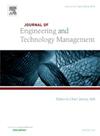打开智能农业创新的包装:农业技术变革的系统文献综述
IF 3.9
3区 管理学
Q2 BUSINESS
Journal of Engineering and Technology Management
Pub Date : 2025-07-01
DOI:10.1016/j.jengtecman.2025.101898
引用次数: 0
摘要
技术变革为组织和社会带来了重大挑战,需要从社会技术的角度来理解。技术与创新管理(TIM)在理解颠覆性变革方面发挥着至关重要的作用。智能农业技术(SFTs)被用作颠覆传统产业的主要例子。本文展示了学者们如何利用TIM理论来帮助更好地理解和提出后续的行动建议。对973篇文献采用书目耦合的方法进行综合。我们确定了最突出的研究主题,并根据技术变革的三种理论方法:进化经济学、技术的社会建构和行动者网络理论,对现有的叙述提出了问题。最后,我们提出了未来研究的理论驱动问题,为TIM指明了新的方向。我们全面回顾和综合智能农业技术与TIM领域交叉的现有研究,利用文献耦合来识别突出的研究主题,突出盲点,并为未来的研究提出问题。为了克服系统文献综述的普遍缺点(Alvesson和Sandberg, 2020)和自动化文献综述的趋势,我们通过对结果进行广泛的探索性定性讨论来补充我们的分析,将我们的发现与理论联系起来,并为未来的研究推导出一套全面的研究问题。我们以Bruun和Hukkinens(2003)研究技术变革的综合框架为基础来指导我们的讨论并扩展我们的批判性评论。因此,我们做出了三个主要贡献。首先,我们对关于SFT和技术变革的文章进行了精心策划和全面的概述,以确定导致关于智能农业技术传播的过度简化假设的理论缺陷。其次,我们通过应用特定领域的三个成熟的技术变革理论来丰富TIM文献,将特定技术应用领域(SFT)与技术与创新管理领域的成熟理论联系起来。第三,通过详细说明这三种理论在多大程度上帮助我们理解现有文献,并在其整个复杂性中进行讨论,我们确定了当前研究的几个盲点,并为SFT和TIM领域的未来研究提出了研究问题。这种方法反对技术决定论和简单的技术发展观点。通过这样做,我们的目标是激励TIM学者使用理论来提高他们对社会技术系统和技术变革复杂性的理解。本文的结构如下:我们介绍了智能农业的采用和传播的现状,介绍了理论框架,描述了用于我们的书目分析的方法,介绍了主要结果,讨论了确定的研究主题,并以总结和未来研究的问题结束。本文章由计算机程序翻译,如有差异,请以英文原文为准。
Unpacking smart farming innovation: A systematic literature review on technological change in agriculture
Technological change presents significant challenges for organizations and society and needs to be understood from a socio-technical perspective. Technology and Innovation Management (TIM) can play a crucial role in understanding disruptive change. Smart farming technologies (SFTs) are used as prime examples for disruption in a traditional industry. This paper shows how scholars can use TIM theories to contribute to a better understanding and subsequent recommendations for action. We review 973 articles using bibliographic coupling to synthesize existing literature. We identify the most prominent research themes and problematize the existing narratives in light of three theoretical approaches to technological change: evolutionary economics, social construction of technology, and actor-network theory. Finally, we present theory-driven questions for future research that indicate new directions for TIM. We comprehensively review and synthesize existing research at the intersection of smart farming technologies and the TIM domain, using bibliographic coupling to identify prominent research themes, highlight blind spots, and generate questions for future research. To counter the common shortcomings of systematic literature reviews in general (Alvesson and Sandberg, 2020) and trending automated literature reviews, we supplement our analysis with an extensive explorative-qualitative discussion of the results, linking our findings back to theory and deriving a comprehensive set of research questions for future research. We build upon Bruun and Hukkinens’ (2003) Integrative Framework for Studying Technological Change to guide our discussion and expand our critical review. Thus, we make three main contributions. First, we give a curated and comprehensive overview of articles on SFT and technological change to identify the theoretical deficiencies that lead to oversimplified assumptions regarding the dissemination of smart farming technologies. Second, we enrich the TIM literature by applying three established theories of technological change in a particular sector, making the connection between a specific domain of technological application (SFT) and established theories in the technology and innovation management field. Third, by detailing the extent to which the three theories help us understand the existing literature and discussing it in its entire complexity, we identify several blind spots of current research and derive research questions for future research in both, the SFT and the TIM field. This approach opposes a technology-deterministic and simplistic view of technological developments. By doing so, we aim to inspire TIM scholars to use theories that sharpen their understanding of the socio-technical system and the complexity of technological change. The article is structured as follows: we present the current state of smart farming adoption and diffusion, introduce the theoretical framework, describe the methodology employed for our bibliographic analysis, present the main results, discuss the identified research themes, and conclude with a summary and questions for future research.
求助全文
通过发布文献求助,成功后即可免费获取论文全文。
去求助
来源期刊
CiteScore
8.00
自引率
6.20%
发文量
29
审稿时长
>12 weeks
期刊介绍:
The Journal of Engineering and Technology Management (JET-M) is an international scholarly refereed research journal which aims to promote the theory and practice of technology, innovation, and engineering management.
The journal links engineering, science, and management disciplines. It addresses the issues involved in the planning, development, and implementation of technological capabilities to shape and accomplish the strategic and operational objectives of an organization. It covers not only R&D management, but also the entire spectrum of managerial concerns in technology-based organizations. This includes issues relating to new product development, human resource management, innovation process management, project management, technological fusion, marketing, technological forecasting and strategic planning.
The journal provides an interface between technology and other corporate functions, such as R&D, marketing, manufacturing and administration. Its ultimate goal is to make a profound contribution to theory development, research and practice by serving as a leading forum for the publication of scholarly research on all aspects of technology, innovation, and engineering management.

 求助内容:
求助内容: 应助结果提醒方式:
应助结果提醒方式:


